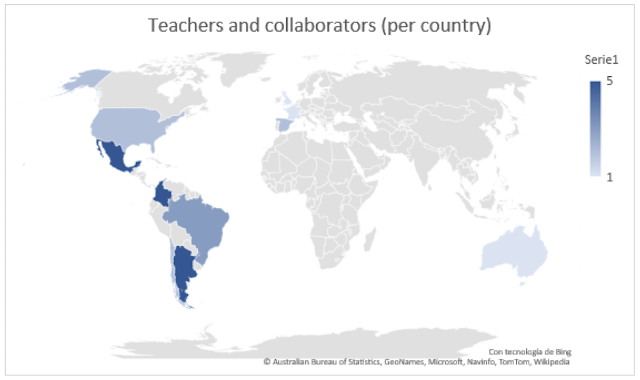Training and Sharing: Towards a New Generation of Maritime Archaeologists in Latin America and the Caribbean
Carlos del Cairo Hurtado and Carla Riera, Externado University of Colombia, Bogotá. carlosdelcairo@gmail.com
Nicolás C. Ciarlo, National Scientific and Technical Research Council (CONICET) – Institute of Archaeology, School of Philosophy & Letters, University of Buenos Aires. nciarlo@conicet.gov.ar
In line with the 2030 Agenda for Sustainable Development, and given current restrictions associated to Covid-19, the UNESCO is developing a training course on The UNESCO Training Manual for the Protection of the Underwater Cultural Heritage in Latin America and the Caribbean (Manders & Underwood 2021). It is organized by the UNESCO Regional Office for Culture in Latin America and the Caribbean (Havana, Cuba) and the UNESCO Cluster Office in Quito, together with other partners in the region, and with financial and technical support from the The Cultural Heritage Agency of the Netherlands | Rijksdienst voor het Cultureel Erfgoed.
This online course aims to contribute to the protection of underwater cultural heritage (UCH), providing students the basic knowledge and technical capabilities needed for its study, conservation, and management. It is grounded on the experience gained through long-running activities developed in the region by UNESCO to strengthen the implementation of the 2001 Convention on the Protection of Underwater Cultural Heritage (UNESCO 2001). Its main principles are: obligation to preserve underwater cultural heritage, in situpreservation as a first option, no commercial exploitation, and training and information sharing: http://www.unesco.org/new/en/culture/themes/underwater-cultural-heritage/2001-convention/.
The cooperation and exchange between scholars and students from the region for the protection of the UCH has been recognized since the late 1990s. Since then, several meetings and courses have allowed specialists from countries of Latin American and the Caribbean to collaborate, promote and develop training activities and joint projects. This has in turn potentiated the local and regional capabilities to gain knowledge and protect the tangible and intangible evidence of past human maritime activities. Previous regional introductory and training courses were developed in Mexico (2010), Santo Domingo (2010), Uruguay (2011), Cuba (2012), Jamaica (2012), Argentina (2013) and St. Eustatius (2014).
In this unprecedented opportunity, the online format brought together 86 advanced students, archaeologists, and university teachers from nearly thirty countries of Latin America (ca. 70%) and the Caribbean (ca. 30%) (Fig. 1) and 30 scholars and researchers specialized in nautical and underwater archaeology from all over the world (Fig. 2).
 |
| Figure 2. Teaching staff of the UNESCO Training Course, per country |
The course began in August 16 and will last until October 29, 2021. During this time, weekly introductory lectures and asynchronous learning activities on specific subjects will cover the units of the UNESCO Training Manual, which presents an updated overview of the theoretical and methodological bases for the protection of UCH, as well as case studies on different management and research activities developed in the region in accordance with the principles of the 2001 UNESCO Convention. Study materials comprise diverse multimedia resources, videoconferences, bibliography and discussion forums, which are available at a Moodle platform. Through this virtual learning environment, students interact with each other and with the teachers on a regular basis, in order to share knowledge and experiences, as well as to design an archaeological research project proposal.
The program covers a wide range of topics: fundamentals of the 2001 UNESCO Convention; introduction to the scope, principles, and practice of underwater archaeology; underwater archaeological resources and management of the UCH; desk-based appraisal and significance assessment of the UCH; data collection and management and Geographical Information Systems (GIS); in situ preservation and intrusive techniques applied to underwater archaeological sites; conservation of UCH; diving and underwater archeology; and museums, public awareness, public participation, and archaeological publications.
Of particular interest for the field of archaeometry is module no. 9. It will deal with naval architecture, shipbuilding and material culture analyses. Close attention will be devoted to the archaeometric applications used to study remains from modern shipwrecks associated with a vessel’s s hull, equipment, artillery, and elements carried on board as ballast, cargo, and personal possessions, among others. Special consideration will be given to the potential of available analytical means to gain knowledge on nautical technology based on the premise of maximum results from minimum remains, put forward by Steffy in 1978, and of special value considering the criteria of non-intrusive research and in situ preservation promoted by the 2001 UNESCO Convention.
In sum, this course constitutes a further step towards the formation of a young generation of maritime archaeologists in the region, who in the near future will contribute to the study, conservation, and management of underwater sites, guaranteeing the preservation and dissemination of our cultural heritage.
References:
Manders, M.R., and C.J. Underwood (eds.) 2021. The UNESCO Training Manual for the Protection of the Underwater Cultural Heritage in Latin America and the Caribbean. United Nations Educational, Scientific and Cultural Organization (UNESCO) and the Cultural Heritage Agency of the Netherlands, Amersfoort, The Netherlands.
Steffy, R.J., 1978. Maximum Results from Minimum Remains. In J.B. Arnold III (ed.), Beneath the Waters of Time (Proceedings of the Ninth Conference of Underwater Archaeology), pp. 53-55. Texas Antiquities Committee Publication No. 6. Austin, Texas.
United Nations Educational, Scientific and Cultural Organization (UNESCO) 2001. Convention on the protection of the underwater cultural heritage (Paris, 2 November 2001). Available online at: https://unesdoc.unesco.org/ark:/48223/pf0000124687.page=56

Comments
Post a Comment